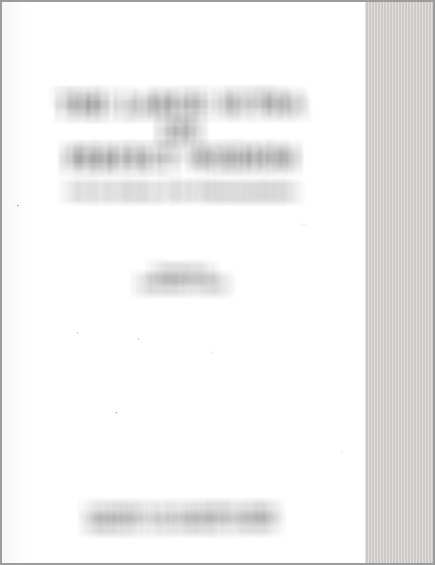Atharvaveda and Charaka Samhita
by Laxmi Maji | 2021 | 143,541 words
This page relates ‘Prameha (urinary tract disease) according to Caraka’ found in the study on diseases and remedies found in the Atharvaveda and Charaka-samhita. These texts deal with Ayurveda—the ancient Indian Science of life—which lays down the principles for keeping a sound health involving the use of herbs, roots and leaves. The Atharvaveda refers to one of the four Vedas (ancient Sanskrit texts encompassing all kinds of knowledge and science) containing many details on Ayurveda, which is here taken up for study.
Prameha (urinary tract disease) according to Caraka
The etymology of prameha is–“pra-miha+ghañ”. The word Prameha means urinary tract disease. Excessive micturition is called Prameha. Maharṣi Caraka discusses disease of Prameha and treatment of obstinate urinary disorders including diabetes or Pramehacikitsā. The causes of Prameha are sedentary lifestyle, intake of excess curds, milk and fatty substances etc. The main doṣa involved in Prameha is kapha. Prameha is caused by the three doṣas i.e., vāyu, pitta and kapha. And the dūṣyas of Prameha are: Medas, rakta, śukra, ambu, vasā, lasikā, majjā, rasa, ojas, and māṃsa. Prameha is of twenty types, namely, ten types of prameha due to kapha, that is curable; six types of prameha due to pitta, that is difficult to cure; four types of prameha due to vāta, that is incurable.
The Premonitory symptoms of Prameha are: matting of the hair, sweet taste in the mouth; numbness and burning sensation in hands and feet; dryness in mouth, palate and throat; thirst and laziness, increased amount of excreta from the body; adherence to excreta in the orifices of the body, burning sensation and numbness in various organs of the body, attraction of insects and ants by the body and urine; smell of row flesh in the urine; and excessive sleep and continuous drowsiness[1].
The complications of Prameha are thirst, diarrhoea, fever, burning sensation, weakness, anorexia and indigestion.
Table 2: Twenty types of Prameha[2]
| Predominant doṣa | Number | Name | Features of urine |
|
Kapha |
10 | 1. Udakameha 2. Ikṣumeha 3. Sāndrameha 4. Sāndraprasādameha 5. Śuklameha 6. Śukrameha 7. Śītameha 8. Śanairmeha 9. Lālāmeha 10. Sikatāmeha |
Watery Like sugarcane juice Viscous urine Has a solid precipitate Whitish Mixed with semen Cold urine Weak stream of urine Saliva-like urine Urine contains gravels-like sand |
| Pitta | 6 | 1. Kṣārameha 2. Kālameha 3. Nīlameha 4. Haridrāmeha 5. Mañjiṣṭameha 6. Raktameha |
Urine like alkali Blackish urine Blueish urine Yellowish urine Light reddish urine Haematuria |
| Vāta | 4 | 1. Majjāmeha 2. Ojameha 3. Vasāmeha 4. Lasikāmeha |
With majjā With ojas With vasā Sticky urine |
(Source: Synopsis on Caraka Saṃhitā)
Vātika varieties Prameha are characterised by the greyish and reddish colouration of urine, pain and attributes of majjā etc. Then it also becomes incurable. The line of treatment for Prameha disease is as follows: if the person is obese and strong, he should be administered evacuation therapy. If the person is weak, he should be advised nourishing therapy. If the person is thin, weak and unfit for evacuation, he should be given decoction, cornflour, Avaleha, and light food preparations etc. A patient suffering from Kaphaja prameha should be administered evacuation, emesis and fasting. The patient suffering from Pittaja prameha should be advised purgation and nourishing food and drinks.
For Prameha disease the following food are used: green gram soup (yūṣa), old rice cooked in bitter vegetables, use of mustard oil in cooking, all the items made of wheat etc. Mentioned below are the general medicines used in Prameha diseases, namely, decoction of Dāruharidrā, triphalā, Mustā; turmeric powder, gooseberry juice with honey; Phalatrikādi kvātha; Lodhrāsava; Madhvāsava; Triphalā juice, etc.
If a person has red coloured urine without any prodromal symptoms of prameha-then it is a case of rakta pitta, rather than prameha. Prameha due to heredity is incurable. Seven types of boils associated with prameha are to be treated by expert surgeons with the help os surgical operations, cleansing, and healing therapies[3].
Footnotes and references:
[1]:
jaṭilībhāvaṃ keśeṣu, mādhuryamāsyasya, karapādayoḥ suptatādāhau, mukhatālukaṇṭhaśoṣaṃ, pipāsām, ālasyaṃ malaṃ kāye, kāyacchidreṣūpadehaṃ, paridāhaṃ suptatāṃ cāṅgeṣu, ṣaṭpadapipīlikābhibhiśca śarīramūtrābhisaraṇaṃ, mūtre ca mūtradoṣān, vistraṃ śarīragandhaṃ, nidrāṃ, tandrāṃ ca sarvakālamiti || (CS. -Nidānasthāna–IV.47); R. K. Sharma & Bhagwan Dash (eds.), Caraka Saṃhitā–Vol. II, Varanasi, Chowkhamba Sanskrit Series Office, 2017, p. 51.
[2]:
Rajneesh V. Giri & Smitha Rajneesh, Synopsis on Caraka Saṃhitā, Varanasi, Chaukhambha Orientalia, 2019, pp. 131-132.
[3]:
C. Cikitsāsthāna–VI.4-58; R. K. Sharma & Bhagwan Dash (eds.), Caraka Saṃhitā–Vol. III, Varanasi, Chowkhamba Sanskrit Series Office, 2017, pp. 299-316.
